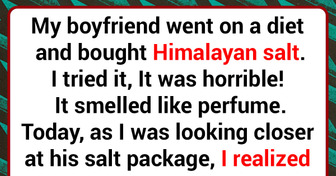15+ Airplane Passengers Who Had a Shocking Experience on Board

The year is 8,000 BCE in Mesopotamia. It’s in Western Asia, between two rivers — the Tigris and Euphrates. In fact, that’s what “Mesopotamia” actually means — “between two rivers.” Agriculture is on the rise, and people already own small farms — a couple of goats and sheep they get milk from.
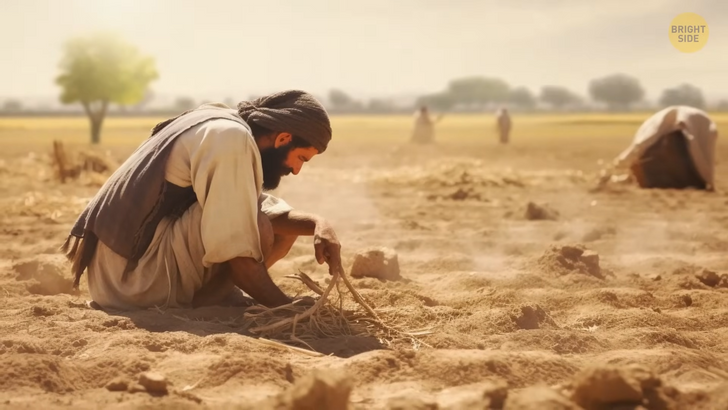
But let’s pay attention to this guy. He has milked his goats but got distracted — a couple of them have wandered away. Of course, he goes to search for them, leaving the milk sitting in the sun, heating up. Several hours later, the farmer comes back with his goats, but — oh no! — the milk has already begun to sour. How unfortunate. But hey, just try it!
Well, the farmer doesn’t have any other choice. It’s not like you can just go to the store to get a new pack of milk in the eighth millennia BCE. So, the acids in the milk have turned the proteins into soft clumps. The farmer tries one of those, and that’s how I get born. Yes, it’s me — cheese. Well, one of my ancestors, I would say. Those are the first soft building globes of cheese, but that’s the beginning. Actually, quite a successful beginning and a big breakthrough.
You can imagine that back in the day, people didn’t have a wide variety of products. No candy or chips, and not even potatoes — those are a couple of millennia younger. But just like today, many people back then were lactose intolerant. And it’s not like they had soy milk and other non-lactose fancy kinds of milk to replace the original product. But cheese, while still a dairy product with the same advantages as milk, contains way less lactose, so it’s easier on the tummy. And also delicious, of course.
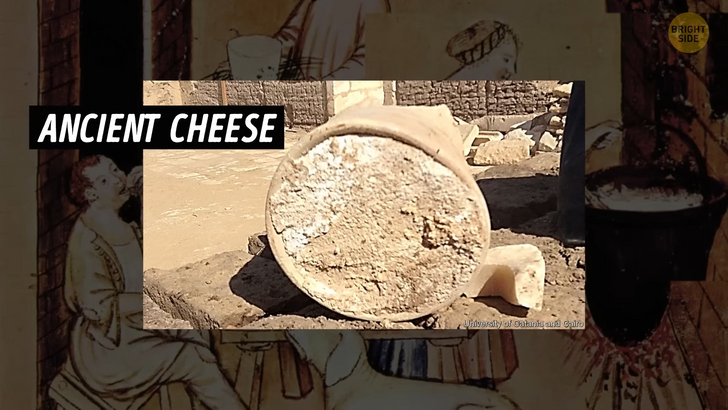
A bonus is that cheese could be stored for a longer period of time, so there was food to eat even during cold winters. Not like “cold” is relevant for hot Mesopotamia, but there were other places. You see, by the end of the Bronze Age, cheese had become an essential product on trading ships. They shipped it all over the eastern Mediterranean and beyond.
Of course, people start looking for new ways of making cheese — more cheese, better cheese. Soon enough, they discover this thingy. Meet rennet — it’s produced in the stomach of young goats, calves, and lambs — but only when they’re still young and drink milk. Later, when they grow up and start consuming grass, there’s no more rennet.
So, how is it related to me? Well, my buddy rennet here has a superpower — it helps to break particular substances in milk and form a solid mass. In fancy words, it accelerates coagulation. Now that rennet has been discovered, people can produce harder cheeses, my closest relatives. And people get literally obsessed with this process.
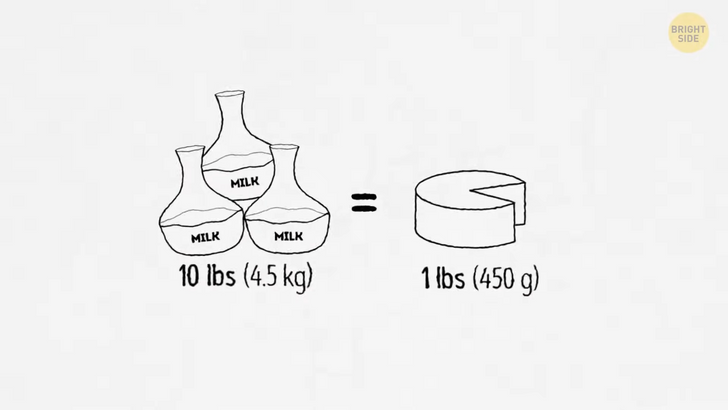
During the Roman Empire, some big houses have separate kitchens purely for cheese production. It takes 10 pounds of milk to make one pound of cheese; it’s 10 times the reduction. But it’s worth it. Cheese becomes popular all around the world, and different cultures invent their own ways of producing it. It depends not only on the animals they have in their lands (which determines the type of milk used) but also on some creativity — cheesemaking practices and aging processes.
Cheese can be made from the milk of cows, buffalo, goats, sheep, horses, and even camels. In Serbia, cheese made from donkey milk is common. In Mongolia, that’s yak cheese; and the Finns have reindeer cheese. So, different countries have their own ways and invent their own types of cheese.
Around the 11th century, Greeks, for example, came up with my cousin, the Feta cheese. It’s made of sheep and goat milk. But back then, they didn’t really have a name for it. The word “feta,” which means “slice,” started to be used in the 17th century. In modern times, this name is protected with a trademark — it means that only Greeks have the right to call their cheese “feta,” and any feta cheese should meet clear standards to be called that.
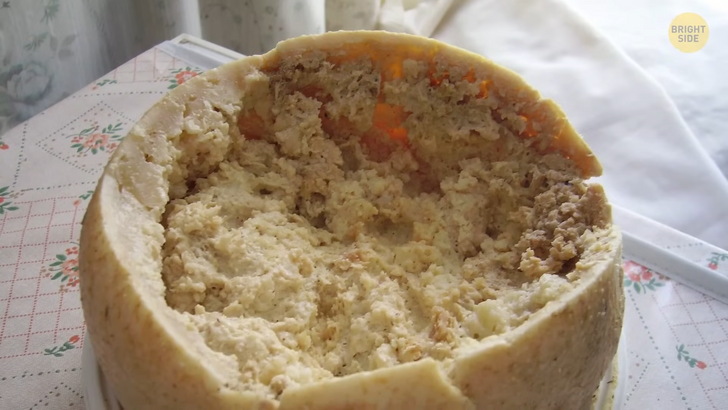
But some cheeses sound odd to most, and not everyone is brave enough to try them. There is a type of cheese called Casu martzu — my fancy cousin from Sardinia that’s considered a delicacy. It’s made from sheep milk — nothing too special at this point — but it contains live maggots. Yes, you got it right; the flies lay their eggs there. When they hatch, they break the cheese and create its soft consistency. Anyone brave enough to try this product must eat it while the larvae are still alive. After that, the cheese is no longer safe to eat. So, would you?
Okay, I’ll tell you a bit about my other cousin, the cheddar. This one simultaneously originated in the UK and the US. It’s made from pasteurized cow’s milk and has an orange color. Originally, it was orange because cows back then were on a grass diet that was rich in beta-carotene — the element that gave cheddar its color. So, high-quality cheddar was established as an orange-colored type of cheese. When cheese producers started to get white cheddar cheese, they started dyeing it on purpose. People still do it today, adding the annatto plant to it.
Cheeses vary in hardness, color, and taste, but you know what seems to be common for most of them? The holes. Look, I have some of them, too. So, why does cheese have holes, big or small? That’s because of how cheese is produced. It’s mostly done by adding bacteria to milk, and holes are created during this process.
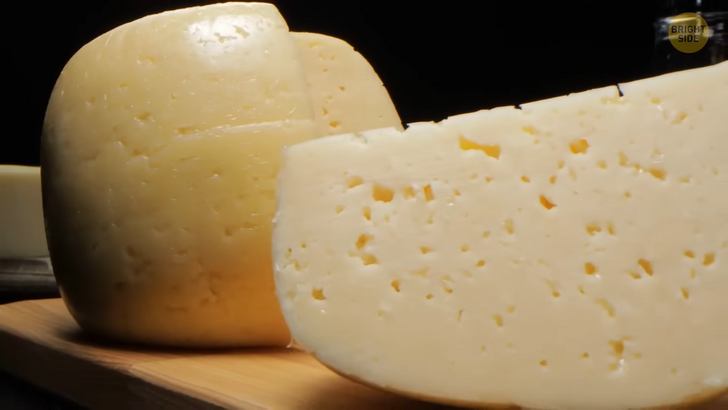
These bacteria consume lactic acid and release little gas bubbles. Those get trapped in the cheese, and then they pop, forming those little holes. The size of the holes depends on the temperature of the milk and its acidity. Most Swiss cheeses have extra-large holes. This cheese is made at a warm temperature of 70°F, and it stays this way for about six weeks. So, the product is very soft, and the bubbles grow especially big.
Also, you’ve probably noticed that some cheeses are covered with white dust. Don’t worry, they’re not moldy and are totally safe to eat. These dust particles are called calcium lactate crystals, also known as “cheese crystals,” and they signify that the cheese is flavorful and well-aged.
After the Industrial revolution, people were replaced by machines. Factories producing cheese opened around the globe. Now, 10,000 years after the invention of cheese, over 2,000 varieties of cheese exist. Probably the most favorite one around the globe is mozzarella. This type of cheese is made out of buffalo milk and is native to Italy. You might think that the Italians are the nation that consumes the most cheese, but you’d be wrong. The biggest cheese fans are the French, but Italy is a close second.
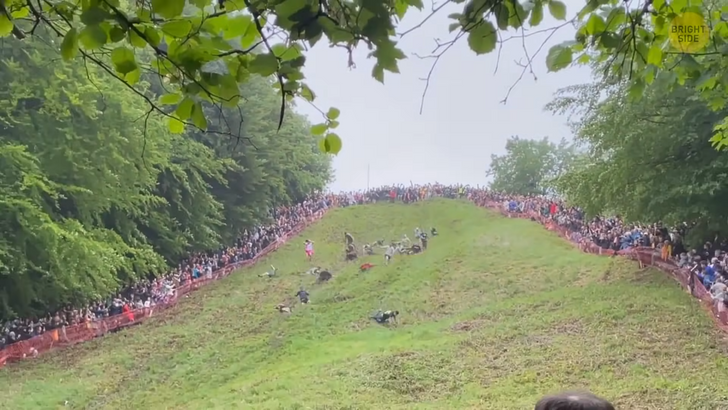
Also, some cultures have odd traditions around cheeses. For example, a town in England has been holding a cheese-rolling competition since at least the 19th century. Well, the first records are from that time, but some believe this has been going on for six centuries.
So, here’s how it works: there’s a 600-ft-long hill. At the top of it, a wheel of Double Gloucester cheese is sent down, and people start racing after it down the hill. The first person to make it to the bottom is the winner and gets the cheese. Even though they are not the biggest cheese consumers in the world, the English do have a thing for cheese. In the 19th century, Queen Victoria got a huge wheel of Cheddar cheese as a wedding gift. It weighed over 1,200 pounds! A lifetime wouldn’t be enough to finish it.
I could talk about my history forever, but it’s time to wrap up. I just have a couple of tips for you to follow if you want to enjoy your cheese:
1) Don’t store it close to a strong-smelling product. Cheese absorbs other aromas very well, so they will mess up the original smell and taste of your cheese.
2) Don’t cut unpasteurized cheese until you’re ready to serve it.
3) Let the cheese straight out of the refrigerator sit for half an hour before you serve it; as for chilled cheeses, take them out a couple of hours in advance.



